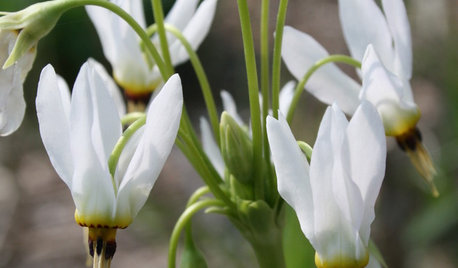Shoot!
alexanndra
19 years ago
Related Stories

HOLIDAYS7 Ways to Shoot a Great Holiday Card Photo at Home
Make this year's holiday card stand out from the crowd with your home as the backdrop and these tips from the pros
Full Story
DECORATING GUIDESCatch a Shooting Star
Add a touch of celestial magic to your home and garden with these 5 star-inspired design ideas
Full Story
DREAM SPACES7 Supermodel Homes and Why Creatives Rent Them
What makes a setting right for fashion and advertising shoots? Find out here
Full Story
HOUZZ TOURSHouzz Tour: Picture-Perfect Simplicity
It’s like camping out in a catalog sometimes at this classic farmhouse — Pottery Barn and other retailers love it for photo shoots
Full Story
GARDENING GUIDESGreat Design Plant: Dodecatheon Meadia
Shooting star is a unique prairie ephemeral and will add a galaxy of interest to your eastern North American garden
Full Story
HOUZZ TOURSHouzz Tour: Light Is Right for a Modern German Home
Newly found natural light illuminates photo shoots, kids' playthings and a snuggly attic for a family in Münster
Full Story
DECORATING GUIDESPro Photo Styling: Say It With Flowers
A top design photographer reveals flower-styling secrets to give your home photo shoots that professional sheen
Full Story
MIDCENTURY STYLEModern Icons: Bullet Planters
The straight-shooting lowdown on these houseplant homes? They work wonderfully for drinks and magazines too, indoors or out
Full Story
MORE ROOMSPress Pause: Styling the Television
50 Clever Screen Selections for Shooting TV Rooms
Full Story
HOW TO PHOTOGRAPH YOUR HOUSE7 Pro Lighting Tips for Budding Home Photographers
Learn how to control daylight and artificial light to get high-quality home photos even if you're just starting out
Full StorySponsored



therealKYgirl
alexanndraOriginal Author
Related Discussions
Shooting Star.....shooting!!
Q
How do peonies shoots look like?
Q
Is this a water shoot?
Q
How many Dahlia shoots from a tuber are too many in a pot?
Q
Priswell
Bdadawg
alexanndraOriginal Author
Gorfram
alexanndraOriginal Author
Gorfram
Priswell
alexanndraOriginal Author
Bdadawg
Gorfram
Priswell
alexanndraOriginal Author